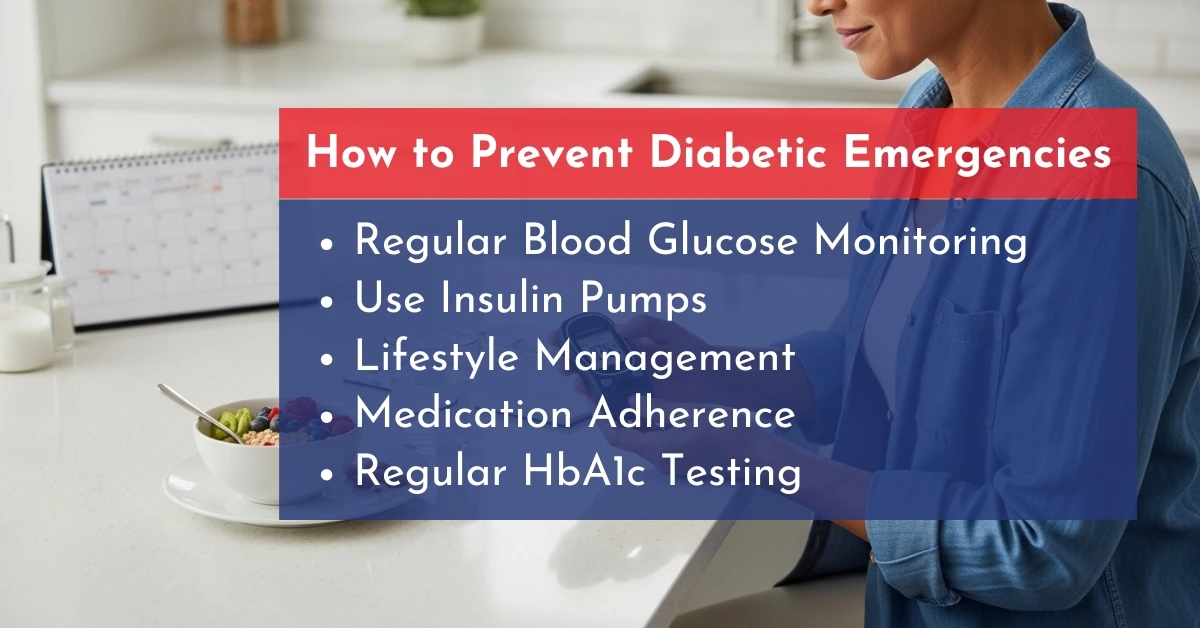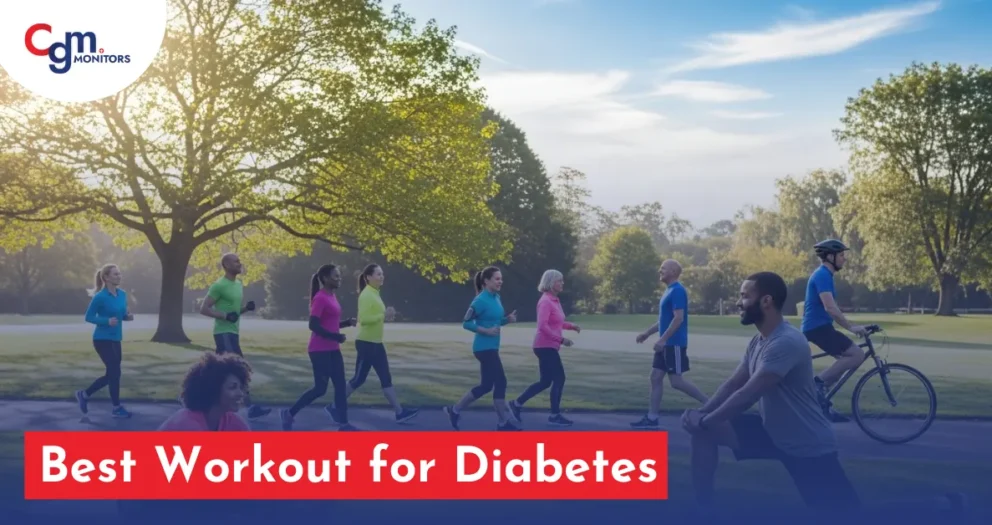Understanding Diabetic Emergencies: What You Need to Know

Table of content
Introduction
Diabetes is a chronic condition affecting millions worldwide. While proper management can prevent complications, diabetic emergencies can occur unexpectedly, posing serious health risks. Understanding these emergencies, their causes, symptoms, and timely interventions can save lives. This comprehensive guide explores all aspects of diabetic emergencies and how patients, caregivers, and healthcare providers can stay prepared.
What Are Diabetic Emergencies?
Diabetic emergencies are acute, life-threatening complications of diabetes mellitus that require immediate attention. They often occur when blood sugar levels deviate drastically from the normal range. Both Type 1 and Type 2 diabetes patients are at risk, along with individuals with gestational diabetes.
These emergencies are often linked to metabolic disorders, including insulin deficiency, electrolyte imbalance, and acid-base disturbances. Understanding the types and early warning signs is crucial for effective management.
Four Main Types of Diabetic Emergencies
1. Hypoglycemia (Low Blood Sugar)
Hypoglycemia is a condition of very low blood sugar. It arises when a person with diabetes intakes too much insulin, slips a meal, or exercises energetically.
Symptoms may include:
- Blurred vision
- Sweating and rapid heartbeat
- Confusion and drowsiness
- Seizures
What To Do:
If you are doubtful someone has hypoglycemia, act fast. For example, if conscious, give the person a fast-acting carbohydrate like juice, glucose tablets, or candy. Additionally, monitor their blood glucose repeatedly to confirm their levels come back up into a normal range. If a person does not recover within 15 minutes, or if they become unconscious, call 911 or other diabetic emergency services instantly.
2. Hyperglycemia (High Blood Sugar)
Hyperglycemia is a condition that happens when your blood glucose is too high. This can be produced by eating too much, missing insulin doses, or being ill.
Symptoms:
- Fatigue and dehydration
- Blurred vision
- Excessive thirst
- Frequent urination
Unchecked hyperglycemia can lead to Diabetic Ketoacidosis (DKA) or Hyperosmolar Hyperglycemic State (HHS), which are medical emergencies.
What to Do:
If a person has hyperglycemia, monitor their blood glucose level. Then, give insulin as required and give water. If the warning signs last or if the blood glucose levels are very high, then seek out medical advice instantly.
3. Diabetic Ketoacidosis (DKA)
Diabetic ketoacidosis is a severe condition. It particularly happens in those with type 1 diabetes. This occurs when the body twitches to break down fats for energy as an alternative to glucose. In association with this, it starts collecting ketones. Thus, its indications are vomiting and nausea, fruity-smelling breath, and abdominal pain.
Symptoms include:
- Fruity-smelling breath
- Rapid heartbeat
- Nausea and vomiting
- Confusion or drowsiness
What to Do:
DKA denotes a medical emergency. That means you should call a healthcare provider or go to an emergency room right away. Treatment generally involves intravenous fluids and insulin. Fluids help rehydrate; insulin helps decrease blood glucose levels and rebalance.
4. Hyperosmolar Hyperglycemic State (HHS)
On the other hand, HHS is another serious condition more prevalent among people with type 2 diabetes. This happens because blood sugar has become so high without having ketones in the blood. It causes confusion, blurred vision, and severe dehydration.
Risk Factors:
- Elderly patients
- Infections or illnesses
- Limited fluid intake
What to Do:
Like DKA, HHS requires emergency medical treatment as well. Thus, take the person to a hospital or any other healthcare facility as soon as possible. The treatment generally involves hydration accompanied by insulin to balance the sugar level of the blood.
How to Prevent Diabetic Emergencies
Screening your blood sugar levels as frequently as possible is the key to avoiding a diabetic emergency. Also, follow your doctor’s advice about medication, exercise, and diet. Be ready with some type of plan in place and know how to practice it if an emergency arises. Prevention is always better than treatment. Key strategies include:
- Blood Glucose Monitoring: Regular checks using glucometers or continuous glucose monitors (CGMs) such as Dexcom G6, Dexcom G7, or FreeStyle Libre 3.
- Insulin Pumps: Devices like Omnipod help maintain stable blood sugar levels and reduce emergency risk.
- Lifestyle Management:
– Carbohydrate counting and meal planning
– Regular exercise and physical activity
– Adequate hydration and sleep - Medication Adherence: Timely administration of insulin and oral diabetes medications.
- Regular HbA1c Testing: Helps track long-term glucose control and prevent complications.

Recognizing Early Warning Signs
Awareness of early warning signs can prevent complications from escalating. Key indicators include:
- Confusion, drowsiness, or seizures
- Fruity breath odor (indicative of DKA)
- Rapid heartbeat and dehydration
- Unusual fatigue or weakness
- Excessive thirst and frequent urination
If these symptoms appear, it is essential to call 911 or visit the nearest emergency room (ER). Patients with diabetes are also advised to wear medical alert bracelets to guide first responders during emergencies.
How Healthcare Providers Can Help
Healthcare providers, including endocrinologists, diabetes educators, and primary care physicians, guide patients in:
- Creating emergency action plans
- Choosing the right CGM or insulin pump
- Educating families about first aid for hypoglycemia and hyperglycemia
- Offering telemedicine consultations for continuous care
RCM providers like Hello MDS also support patients by:
- Facilitating access to CGM devices and insulin pumps
- Providing insurance guidance for diabetes supplies
- Offering patient education and follow-ups to prevent emergencies
Conclusion:
Conclusively, in most aspects, diabetic emergencies are quite alarming. Knowing well about them and what to do in these circumstances can assist in better managing such emergencies. Stay up-to-date and in touch with your health provider will let you practice good health practices, reducing risks as far as possible. With proactive monitoring, the use of CGMs, insulin pumps, and proper lifestyle management, most emergencies are preventable. Combining this with patient education, telemedicine, and emergency preparedness ensures that diabetic individuals can live safely and confidently.














Write a comment
Your email address will not be published. All fields are required